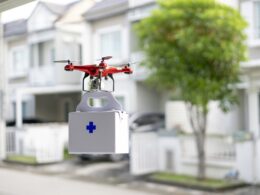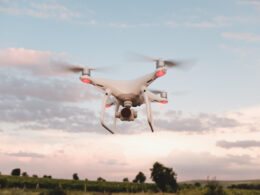the health strategist
institute and portal
for health transformation
& digital health strategy
Joaquim Cardoso MSc.
Chief Research and Strategy Officer (CRSO),
Chief Editor and Senior Advisor
November 28, 2023
One page summary
What is the message?
This groundbreaking study explores the efficacy of deploying automated external defibrillators (AEDs) via drones to improve bystander defibrillation for out-of-hospital cardiac arrests.
The research focuses on the frequency of successful AED deliveries before ambulance arrival and measures the median time benefit achieved through this innovative approach.

What are the key points?
Study Design and Scope:
- Prospective observational study in Sweden.
- Five AED-equipped drones in controlled airspaces covering 200,000 inhabitants.
- Excluded cases involving children under 8, trauma, and emergency medical services-witnessed incidents.
Outcome Metrics:
- Percentage of cases with drone-delivered AEDs before ambulance arrival.
- Median time difference between AED delivery by drone and ambulance arrival.
- Percentage of attached drone-delivered AEDs and successful defibrillations.
Study Findings:
- 211 suspected out-of-hospital cardiac arrest alerts from April 21, 2021, to May 31, 2022.
- Drones deployed in 72 cases (34%).
- Successful AED delivery in 81% of drone-deployed cases.
- AED delivered before ambulance in 67% of cases, with a median time benefit of 3 min and 14s.
- 49% of these cases were true out-of-hospital cardiac arrests.
- 33% of cases with attached drone-delivered AEDs.
- Two cases (33%) with a shockable first rhythm were defibrillated by a drone-delivered AED, resulting in one 30-day survival.
- No adverse events reported.
- AED delivery (not landing) within 15 meters from the patient or building in 91% of cases.
Statistics
- Total Cases: 211 suspected cardiac arrest alerts.
- Drone Deployment Rate: 34% of cases.
- Successful AED Delivery Rate: 81% of drone-deployed cases.
- Drone-AED Arrival Before Ambulance: 67% of cases.
- Median Time Benefit: 3 min and 14 s.
- True Cardiac Arrest Cases: 49% of cases.
Examples
- In 37 cases, AEDs were delivered by drones before ambulance arrival, showcasing the practical impact of this intervention.
- Two cases demonstrated successful defibrillation by a drone-delivered AED, resulting in one 30-day survival, emphasizing the life-saving potential.
Conclusion
This study demonstrates that AED-equipped drones dispatched in cases of suspected out-of-hospital cardiac arrests significantly enhance response times, delivering AEDs before ambulance arrival in two-thirds of cases.
The median time benefit of over 3 minutes underscores the clinical relevance of this intervention. The findings suggest that drone-mediated AED delivery has the potential to decrease the time to AED attachment, ultimately improving outcomes for out-of-hospital cardiac arrest patients.
The absence of adverse events and the high success rate in AED delivery highlight the feasibility and safety of implementing this innovative approach in emergency medical services.
DEEP DIVE

This summary was written based on the article “Drone delivery of automated external defibrillators compared with ambulance arrival in real-life suspected out-of-hospital cardiac arrests: a prospective observational study in Sweden” published by The Lancet Digital Health and written by Sofia Schierbeck, MD; Anette Nord, PhD; Prof Leif Svensson, PhD; Mattias Ringh, PhD; Per Nordberg, PhD; Prof Jacob Hollenberg, PhD; Peter Lundgren, PhD; Fredrik Folke, PhD; Martin Jonsson, PhD; Sune Forsberg, PhD; and Andreas Claesson, PhD.
To read the original publication, click here.








